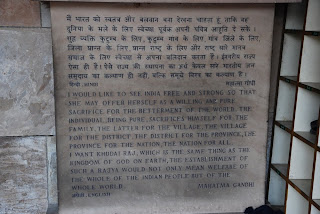My crack traveling companion and I braved the Indian sub-continent for nearly a month, trying to cram in all the experiences we could, not so very long after the bombings in Mumbai (Bombay). As usual, everyone thought we were crazy to go, but also as usual, we had a perfectly safe and marvelous time!
Our first stop was Delhi, Old and New. Old is more interesting, if you ask me. Even when Bombay and Madras were mere trading posts and Calcutta a mud-hut village, Delhi had been the seat of an empire for 500 years. The best way to see the old city is by rickshaw!

It's not really like you could travel any other way in these narrow alleys and when there are two rickshaws coming in opposite directions, best to avert your eyes...

...just don't look up, because the array of power and telephone lines strung every which way above the alleys is pretty terrifying!

No, best to keep your eyes on the display of sari fabric in the windows...

...and the unintentionally amusing signage.


















































